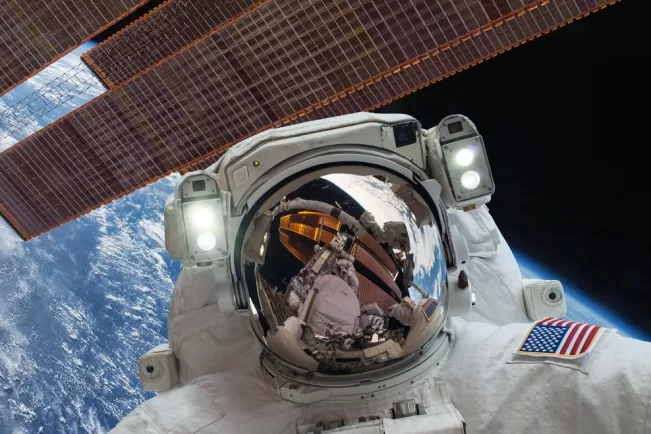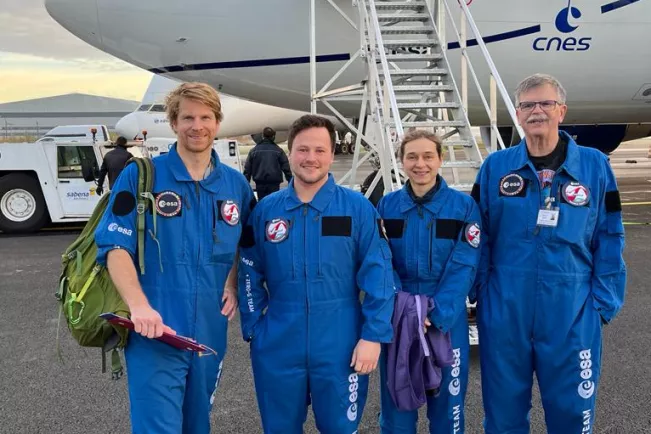Department of Computer Science
Research team investigates changes in motion perception in space

In the study The effects of long-term exposure to microgravity and body orientation relative to gravity on perceived travelled distance, the researchers investigated whether multisensory processing of visual and vestibular signals, i.e. signals related to the sense of balance, plays a role.
The ISS orbits the earth at a high speed of 28,000 kilometres per hour (https://www.dlr.de/schoollab/desktopdefault.aspx/tabid-17420/). This means that the space station and the people in it are constantly in free fall, which is why it is referred to as "weightlessness". This state can give people the feeling of travelling faster. The research team asked themselves whether people can adapt to this type of perception of their own movement and whether their sense of distance travelled remains largely intact.
The perception of self-motion is a multisensory process that includes visual, vestibular and other cues. If the perception of self-motion is only triggered by visual movements, vestibular cues indicate that the body remains stationary, which may distort the observer's perception. If the precision of vestibular cues is reduced, e.g. by lying down or adapting to weightlessness, these distortions may decrease, which is associated with a reduction in precision.

Experimental setup
Using a target movement task in virtual reality (VR), the scientists tested the hypothesis on six astronauts each.
These and the control group on Earth were shown a target at a series of simulated distances. After the target had disappeared, a forward self-motion was simulated by optical flow. The participants indicated when they thought they had reached the previously seen location of the target.
Execution
The astronauts completed the task on Earth (supine and sitting upright) before spaceflight, during the first few days after their arrival in the space station and again after a few months in weightlessness, a few days after their landing back on Earth and a few months after their return. The control subjects carried out the experiment on Earth under similar conditions, assuming a reclining position to simulate being in space.
Result
While the variability was similar in all conditions, the supine position led to significantly higher gains (target distance/perceived travel distance) than the seated position for the astronauts before the flight and in the measurement immediately after their return.
No difference was found between the astronauts' performance on Earth and on board the ISS, suggesting that the assessment of distance travelled remained largely unaffected by long-term exposure in the ISS. Furthermore, the researchers found no differences between the male and female participants.
The current study is the first of three to be published on the topic. Bury continues to support the research team (Björn Jörges, Meaghan Mc Manus, Ambika Bansal, Robert S. Allison, Michael Jenkin, Laurence R. Harris). The researchers' aim remains for the results to provide insights into the complexity of perception, which could have implications for the planning of future space missions, among other things.
Kontakt

Rainer Herpers
Scientific Director of the Graduate Institute, Professor for Computer Vision, Computer Graphics, Multimedia Applications , Director of the Institute for Visual Computing, Director of the Department of Informatics and Data Science at PK NRW
Research fields
Location
Sankt Augustin
Room
F 427
Address
Grantham-Allee 20
53757, Sankt Augustin
Telephone
+49 2241 865 217Location
Sankt Augustin
Room
C 275
Address
Grantham-Allee 20
53757, Sankt Augustin
Telephone
+49 2241 865 217